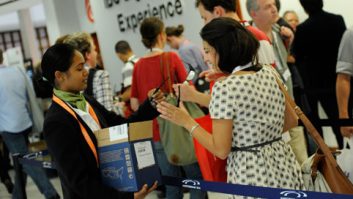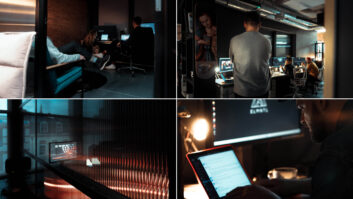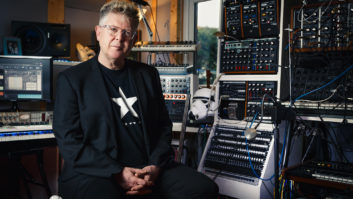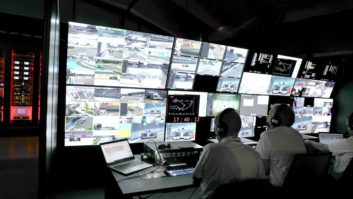
Gone are the days when the ability to control all devices via a unified, overarching control system was enough to set one’s pulse racing. Even staunch defenders of ST 2110-based infrastructures admit that getting everything to work as expected used to take oodles of blood, sweat and tears. Just ask them about the behind-the-scenes programming and configuration work as well as their negotiations with vendors to implement the missing links.
In a sometimes brutally competitive environment, operators are expected to do more with ever less and quite naturally look for solutions that keep their tasks manageable. They expect their IP infrastructure to work “like a samba that swings so cool and sways so gently” right from the start…
Head start
Finding ways to reduce complexity, increase speed, and simplify the management of devices and signals with higher levels of agility and protection is key.
Operators and vendors can be proud of what has already been achieved. The number of operations built around a distributed set-up, with control rooms on premise in different parts of the world and data centres in still other locations is growing steadily. Operators in the US, Australia, Norway, Belgium and many other countries successfully managed to devise a new normal where the studio as well audio and video controllers are in one city, whilst the processing happens elsewhere.
Flexible, globe-spanning resource sharing over the IP network allows broadcasters and production service providers to lower their capital expenditures simply by using the tools they already own more frequently. Some users even went so far as to design multi-functional workspaces whose feature-set is determined by the credentials of the user logging into that space. All of this was implemented well before the global pandemic.
Vendors who pioneered the migration to IP for both audio and video infrastructure had already reached cruise speed when distributed production scenarios moved from being a forward-looking approach to sheer necessity.
With all elements in place and most pitfalls out of the way, they rightly anticipated that the next step would be to make broadcast IP manageable. Hence the launch of the HOME management platform for IP-based media infrastructures. It offers a microservice architecture based on modern technology and techniques that deliver the performance, reliability and experience tier 1 broadcasters expect.
More standards
Interoperability has been at the top of the agenda since day one. The term stands for the ability to use best-of-breed solutions for the task at hand, irrespective of the vendor. This requires vendors to scrupulously stick to the protocol of the open standards employed: ST 2110, AES67, ST 2022, etc. Complications often arose from the fact that different manufacturers seemed to have different understandings of the word ‘scrupulous’.
Another aspect was quickly brought to the vendors’ attention: unlike IP-based networks for IT applications, broadcast and AV tools are essentially blind until operators assign them an IP address and make the other networked devices aware of them. This used to be a manual process that often took weeks, or months, for large broadcast infrastructures. It was also error-prone.
To alleviate this issue, a number of manufacturers jointly developed the AMWA NMOS IS-04 and IS-05 protocols that take care of discovering and registering devices as well as device connection management. NMOS is an open standard with a certain level of interoperability, but it has yet to become the silver bullet that allows all devices to work harmoniously together. This is not intentional, by the way, it typically occurs due to differences in interpretation, behaviour and implementation of specifications.
In any case, today’s operators expect more than discovery and registration: they want a simple, but rich user experience, complete with the ability to tweak parameter settings on remote devices and signal grouping for one-click routing of essences. Separating audio from video and metadata offers more flexibility… except when it doesn’t. And this is where essence grouping steps in: devices and signals can be routed quickly and easily using a platform-agnostic web UI front-end.
Like NMOS, HOME revolves around a registry that keeps track of all known devices and greatly simplifies the discovery and registration process (no more manual input of IP addresses, etc).
IP broadcast standards for the mere encapsulation of content (ST 2110) can be complemented with robust, established IT standards for other important tasks. Support for DHCP, DNS and RADIUS therefore makes a lot of sense.
Elephant in the room
Given the dramatically increased awareness regarding network security and the need for a strategy to fend off hacker attacks and content theft, the addition of the tried-and-tested 802.1x standard offers a robust solution.
This simplified way of adding devices to a network via automated discovery and registration may pose a new threat: the newly-added device might immediately come online and wreak havoc on at least part of the network. This is avoided by a quarantine routine: on power-up or when a network connection is made, unknown devices are quarantined; i.e. allocated to a specific VLAN or switch ports, which are shut down. Admitting such devices is a matter of pressing a button on the HOME GUI, provided you have the matching user credentials.
Established standards
Offering anything beyond mere signal encapsulation for reliable transport requires a number of additional standards.
Rather than try to develop those from the ground up, which would take years, with absolutely no guarantee that they will eventually work as expected, borrowing from the IT world appears much more effective. There are a lot of robust standards that ‘work’ on a broadcast- and AV-centric network.
This is what HOME offers, complete with substantial support for NMOS. The other remaining concerns are being addressed as we speak. Almost any tool can become HOME-native through the implementation of a readily available API, and some vendors already take advantage of this opportunity.
Obviously, all sites anywhere in the world can become a part of the same intuitive and secure network, which can be made resilient and reliable by means of concurrent active instances and a clustered microservice architecture, along with high-level redundancy.
Samba anyone?







